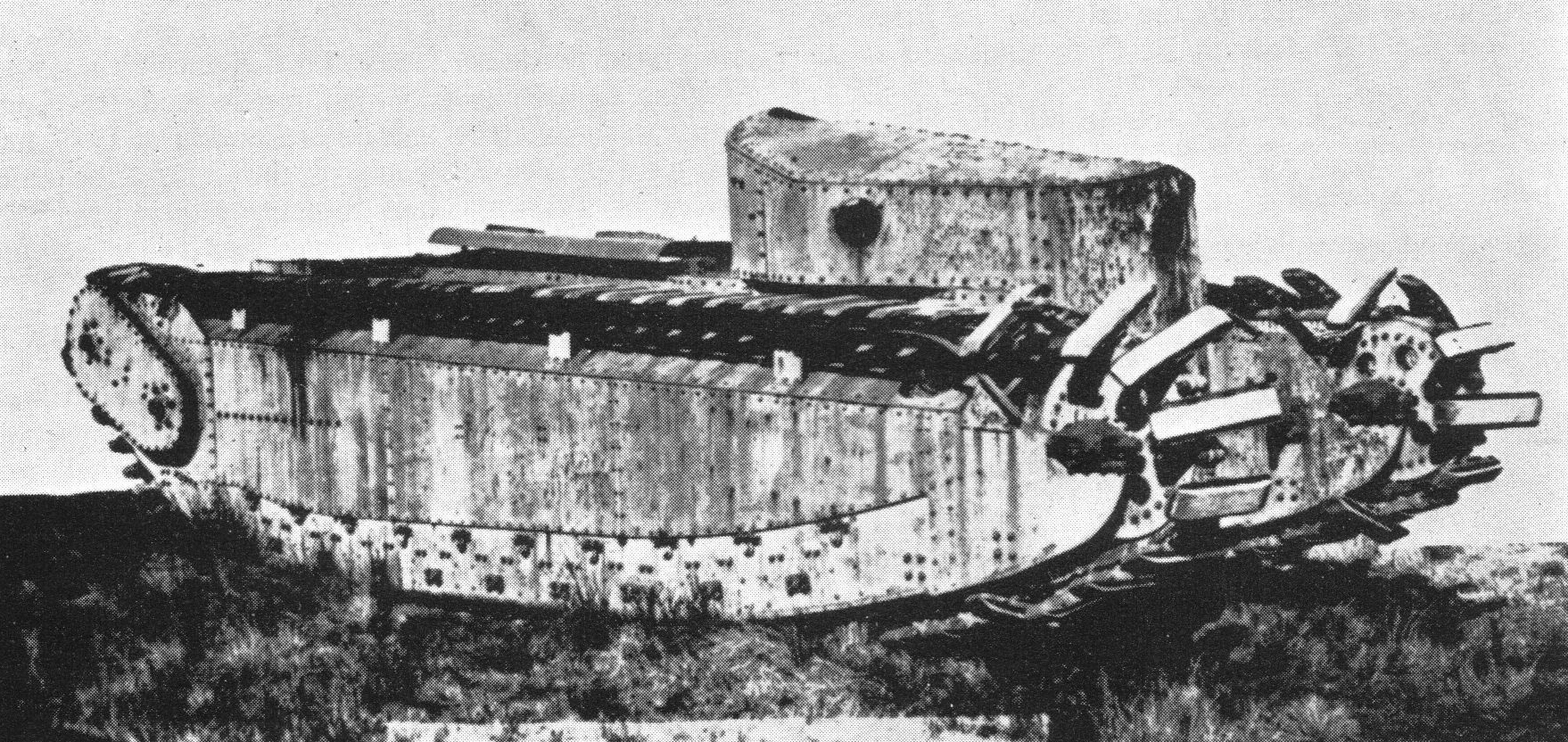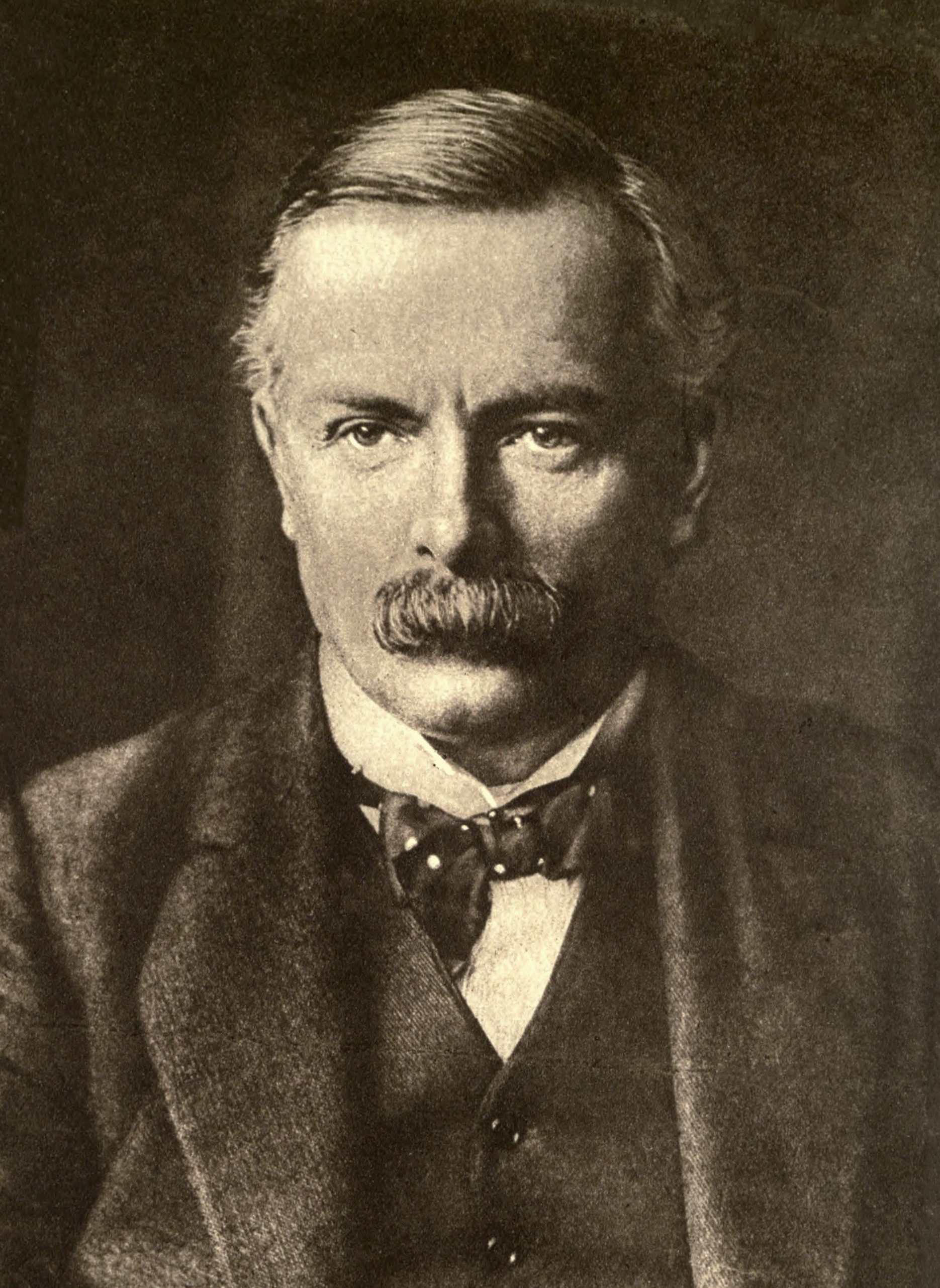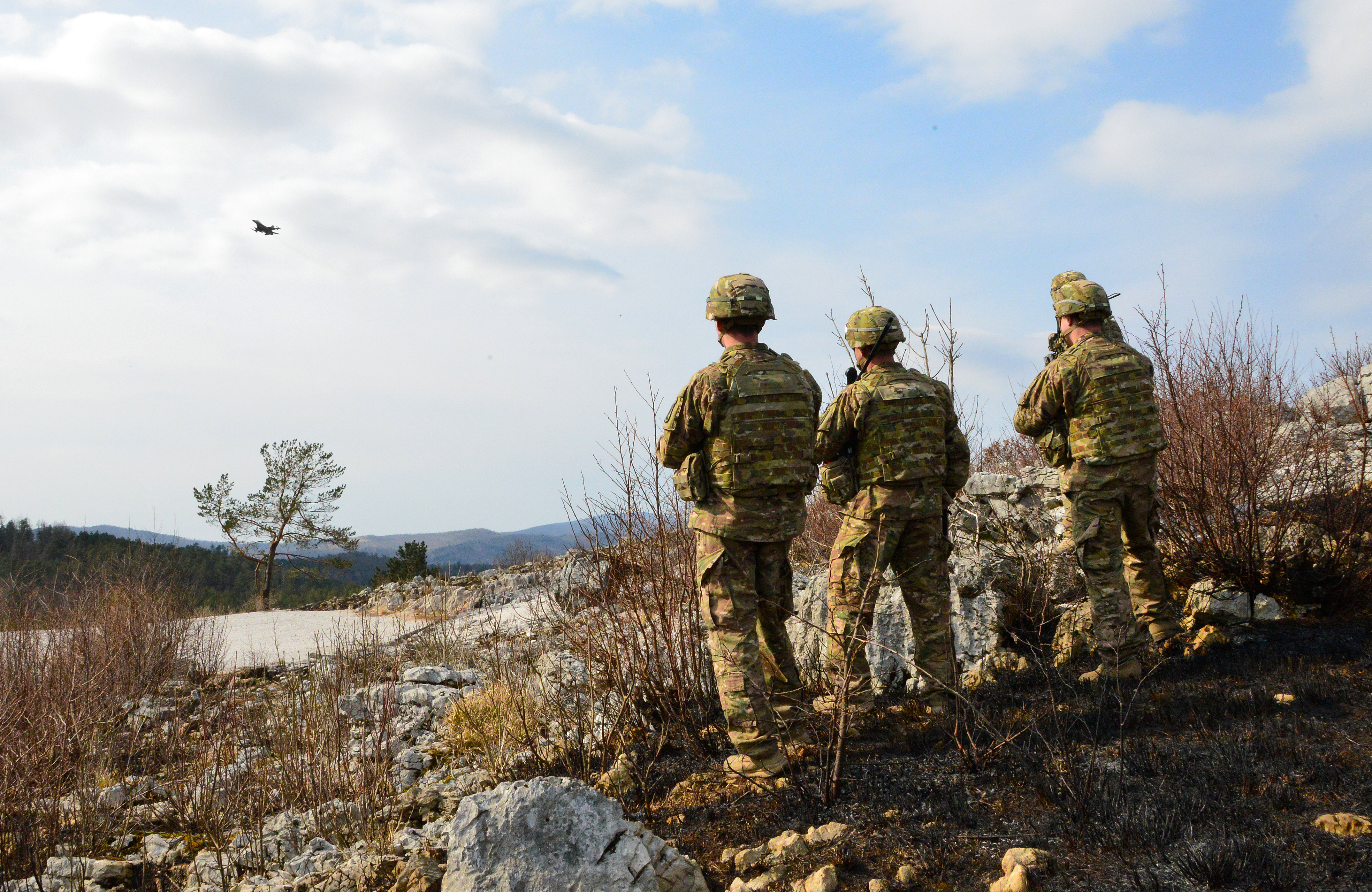|
Plan 1919
Plan 1919 was a military strategy drawn up by J.F.C. Fuller in 1918 during World War I. His plan criticised the practice of physically destroying the enemy, and instead called for tanks to rapidly advance into the enemy's rear area to destroy supply bases and lines of communication, which would also be bombed. He suggested a lightning thrust toward the command center of the German Army: :"... every available bombing machine should concentrate on the various supply and road centres. The signal communication should not be destroyed, for it is important that the confusion resulting from the dual attack carried out by the Medium D tanks and aeroplanes should be circulated by the enemy. Bad news confuses, confusion stimulates panic … (then) a carefully mounted artillery, tank and infantry attack should be launched, the objective of which is the zone of the enemy's guns: namely the secondary tactical zone some 10,000 yards deep." :"so does an army depend for its power on the wi ... [...More Info...] [...Related Items...] OR: [Wikipedia] [Google] [Baidu] |
Tank
A tank is an armoured fighting vehicle intended as a primary offensive weapon in front-line ground combat. Tank designs are a balance of heavy firepower, strong armour, and good battlefield mobility provided by tracks and a powerful engine; usually their main armament is mounted in a turret. They are a mainstay of modern 20th and 21st century ground forces and a key part of combined arms combat. Modern tanks are versatile mobile land weapons platforms whose main armament is a large-caliber tank gun mounted in a rotating gun turret, supplemented by machine guns or other ranged weapons such as anti-tank guided missiles or rocket launchers. They have heavy vehicle armour which provides protection for the crew, the vehicle's munition storage, fuel tank and propulsion systems. The use of tracks rather than wheels provides improved operational mobility which allows the tank to overcome rugged terrain and adverse conditions such as mud and ice/snow better than wheeled vehicles, ... [...More Info...] [...Related Items...] OR: [Wikipedia] [Google] [Baidu] |
Motorized Infantry
Motorized infantry is infantry that is transported by trucks or other motor vehicles. It is distinguished from mechanized infantry, which is carried in armoured personnel carriers or infantry fighting vehicles, and from light infantry, which can typically operate autonomously from supporting elements and vehicles for relatively long periods and may be airborne. Operations As defined by the United States Army, motorization is "the use of unarmored wheeled vehicles for the transportation of combat units."Infantry Division Transportation Battalion and Transportation, Tactical Carrier Units. (1962). United States: Headquarters, Department of the Army. p. 11 Motorizing infantry is the first stage towards the mechanization of an army. Civilian trucks are often readily adaptable to military uses of transporting soldiers, towing guns, and carrying equipment and supplies. Motorization greatly increases the strategic mobility of infantry units, which would otherwise rely ... [...More Info...] [...Related Items...] OR: [Wikipedia] [Google] [Baidu] |
Cancelled Military Operations Of World War I
Cancel or cancellation may refer to: *Flight cancellation and delay, not operating a scheduled flight Sociology * Cancel culture, boycott and ostracism calling out offensive behavior on social media or in real life Technology and science *Cancel leaf, a bibliographic term for replaced leaves in printed books *Cancellation property, the mathematical property if ''a''×''b'' = ''a''×''c'' then ''b'' = ''c'' **Cancelling out, a technique for simplifying mathematical expressions *Catastrophic cancellation, numerical error arising from subtracting approximations to nearby numbers *Noise cancellation, a method for reducing unwanted sound *Phase cancellation, the effect of two waves that are out of phase with each other being summed *Cancel message, a special message used to remove Usenet articles posted to news servers *Cancel character, an indication that transmitted data are in error or are to be disregarded * Resolution rule, in propositional logic a valid inference rule t ... [...More Info...] [...Related Items...] OR: [Wikipedia] [Google] [Baidu] |
Military Operations Of World War I Involving The United Kingdom
A military, also known collectively as armed forces, is a heavily armed, highly organized force primarily intended for warfare. It is typically authorized and maintained by a sovereign state, with its members identifiable by their distinct military uniform. It may consist of one or more military branches such as an army, navy, air force, space force, marines, or coast guard. The main task of the military is usually defined as defence of the state and its interests against external armed threats. In broad usage, the terms ''armed forces'' and ''military'' are often treated as synonymous, although in technical usage a distinction is sometimes made in which a country's armed forces may include both its military and other paramilitary forces. There are various forms of irregular military forces, not belonging to a recognized state; though they share many attributes with regular military forces, they are less often referred to as simply ''military''. A nation's military may f ... [...More Info...] [...Related Items...] OR: [Wikipedia] [Google] [Baidu] |
Minister Of Munitions
The Minister of Munitions was a British government position created during the First World War to oversee and co-ordinate the production and distribution of munitions for the war effort. The position was created in response to the Shell Crisis of 1915 when there was much newspaper criticism of the shortage of artillery shells and fear of sabotage. The Ministry was created by the Munitions of War Act 1915 passed on 2 July 1915 to safeguard the supply of artillery munitions. Under the very vigorous leadership of Liberal party politician David Lloyd George, the Ministry in its first year set up a system that dealt with labour disputes and fully mobilized Britain's capacity for a massive increase in the production of munitions. The government policy, according to historian J. A. R. Marriott, was that: : No private interest was to be permitted to obstruct the service, or imperil the safety, of the State. Trade Union regulations must be suspended; employers' profits must be limited, s ... [...More Info...] [...Related Items...] OR: [Wikipedia] [Google] [Baidu] |
Winston Churchill
Sir Winston Leonard Spencer Churchill (30 November 187424 January 1965) was a British statesman, soldier, and writer who served as Prime Minister of the United Kingdom twice, from 1940 to 1945 Winston Churchill in the Second World War, during the Second World War, and again from 1951 to 1955. Apart from two years between 1922 and 1924, he was a Member of Parliament (United Kingdom), Member of Parliament (MP) from 1900 to 1964 and represented a total of five UK Parliament constituency, constituencies. Ideologically an Economic liberalism, economic liberal and British Empire, imperialist, he was for most of his career a member of the Conservative Party (UK), Conservative Party, which he led from 1940 to 1955. He was a member of the Liberal Party (UK), Liberal Party from 1904 to 1924. Of mixed English and American parentage, Churchill was born in Oxfordshire to Spencer family, a wealthy, aristocratic family. He joined the British Army in 1895 and saw action in British Raj, Br ... [...More Info...] [...Related Items...] OR: [Wikipedia] [Google] [Baidu] |
Adamsite
Adamsite or DM is an organic compound; technically, an arsenical diphenylaminechlorarsine, that can be used as a riot control agent. DM belongs to the group of chemical warfare agents known as vomiting agents or sneeze gases. First synthesized in Germany by Heinrich Otto Wieland in 1915, it was independently developed by the US chemist Roger Adams (for whom it is named) at the University of Illinois in 1918. Composition DM is an odourless crystalline compound with a very low vapour pressure. The colour of the crystals ranges from bright yellow to dark green depending on the purity. It is readily soluble in some organic solvents (e.g., acetone, dichloromethane), but nearly insoluble in water. In vaporous form it appears as a canary yellow smoke. Effects Adamsite is usually dispersed as an aerosol, making the upper respiratory tract the primary site of action. Although the effects are similar to those caused by typical riot control agents (e.g. CS), they are slower in onset but ... [...More Info...] [...Related Items...] OR: [Wikipedia] [Google] [Baidu] |
Operation Iraqi Freedom
{{Infobox military conflict , conflict = Iraq War {{Nobold, {{lang, ar, حرب العراق (Arabic) {{Nobold, {{lang, ku, شەڕی عێراق (Kurdish languages, Kurdish) , partof = the Iraq conflict (2003–present), Iraq conflict and the War on terror , image = Iraq War montage.png , image_size = 300px , caption = Clockwise from top: US troops at Uday Hussein, Uday and Qusay Hussein's hideout; insurgents in northern Iraq; the Firdos Square statue destruction, toppling of the Saddam Hussein statue in Firdos Square , date = {{ubl, {{Start and end dates, 2003, 3, 20, 2011, 12, 18, df=yes({{Age in years, months and days, 2003, 03, 19, 2011, 12, 18) , place = Iraq , result = * 2003 invasion of Iraq, Invasion and History of Iraq (2003–11), occupation of Iraq * Overthrow of Arab Socialist Ba'ath Party – Iraq Region, Ba'ath Party government * Execution of Saddam Hussein in 2006 * Re ... [...More Info...] [...Related Items...] OR: [Wikipedia] [Google] [Baidu] |
Close Air Support
In military tactics, close air support (CAS) is defined as air action such as air strikes by fixed or rotary-winged aircraft against hostile targets near friendly forces and require detailed integration of each air mission with fire and movement of these forces and attacks with aerial bombs, glide bombs, missiles, rockets, autocannons, machine guns, and even directed-energy weapons such as lasers.''Close Air Support''. United States Department of Defense, 2014. The requirement for detailed integration because of proximity, fires or movement is the determining factor. CAS may need to be conducted during shaping operations with Special Operations Forces (SOF) if the mission requires detailed integration with the fire and movement of those forces. A closely related subset of air interdiction (AI), battlefield air interdiction, denotes interdiction against units with near-term effects on friendly units, but which does not require integration with friendly troop movements. The ter ... [...More Info...] [...Related Items...] OR: [Wikipedia] [Google] [Baidu] |
Sopwith Salamander
The Sopwith TF.2 Salamander was a British ground-attack aircraft of the First World War designed by the Sopwith Aviation Company which first flew in April 1918. It was a single-engined, single-seat biplane, based on the Sopwith Snipe fighter, with an armoured forward fuselage to protect the pilot and fuel system from ground fire during low level operations. It was ordered in large numbers for the Royal Air Force but the war ended before the type could enter squadron service, although two were in France in October 1918. Design and development In August 1917, the British Royal Flying Corps (RFC) introduced the coordinated mass use of single-seat fighter aircraft for low-level ground-attack operations in support of the Third Battle of Ypres, with Airco DH.5s, which were unsuitable for high-altitude combat, specialising in this role. The tactic proved effective and was repeated at the Battle of Cambrai in November 1917 by DH.5s and Sopwith Camels being used in strafing attacks. Whi ... [...More Info...] [...Related Items...] OR: [Wikipedia] [Google] [Baidu] |
Mark VIII Tank
The Mark VIII tank also known as the Liberty or The International was a British-American tank design of the First World War intended to overcome the limitations of the earlier British designs and be a collaborative effort to equip France, the UK and the US with a single heavy tank design. Production at a site in France was expected to take advantage of US industrial capacity to produce the automotive elements, with the UK producing the armoured hulls and armament. The planned production levels would have equipped the Allied armies with a very large tank force that would have broken through the German defensive positions in the planned offensive for 1919. In practice, manufacture was slow and only a few vehicles were produced before the end of the war in November 1918. After the war, 100 vehicles assembled in the US were used by the US Army until more advanced designs replaced them in 1932. A few tanks that had not been scrapped by the start of World War II were offered to Cana ... [...More Info...] [...Related Items...] OR: [Wikipedia] [Google] [Baidu] |






_Q63827.jpg)
